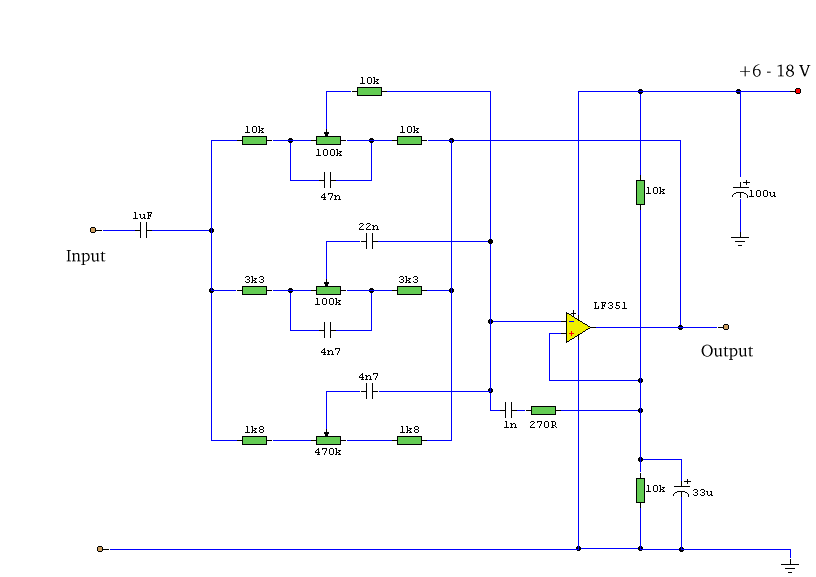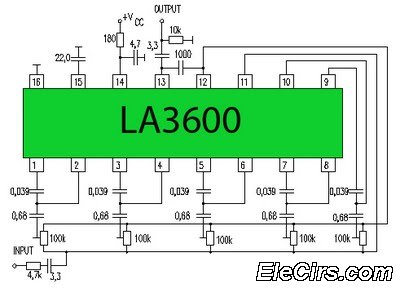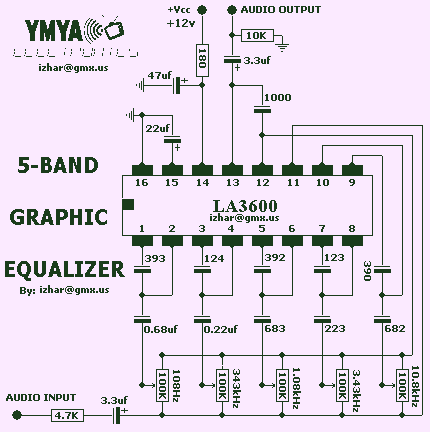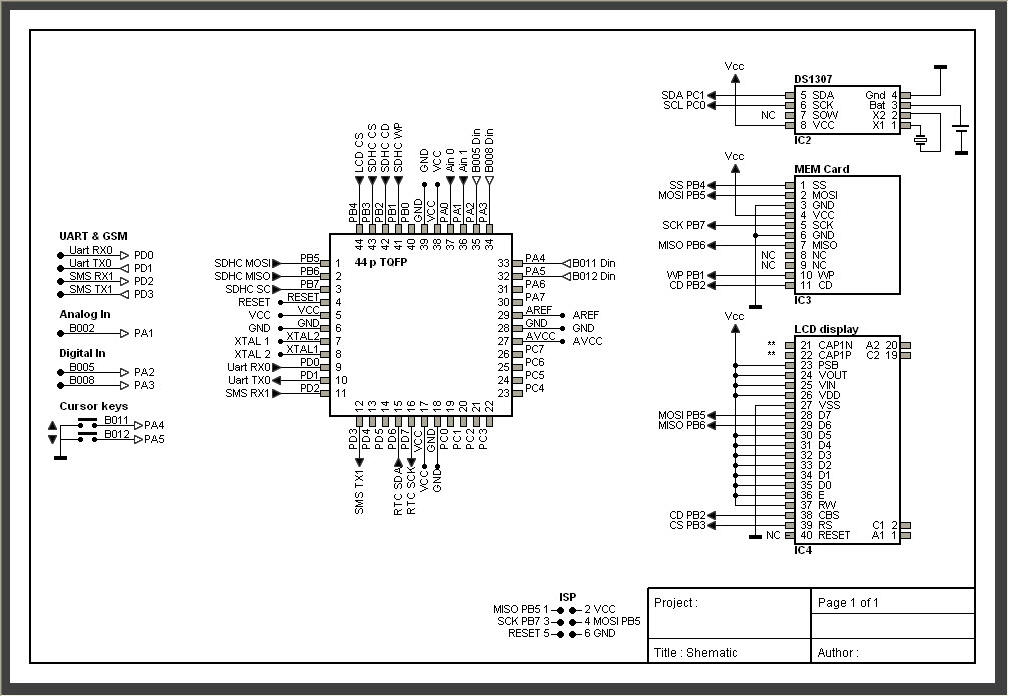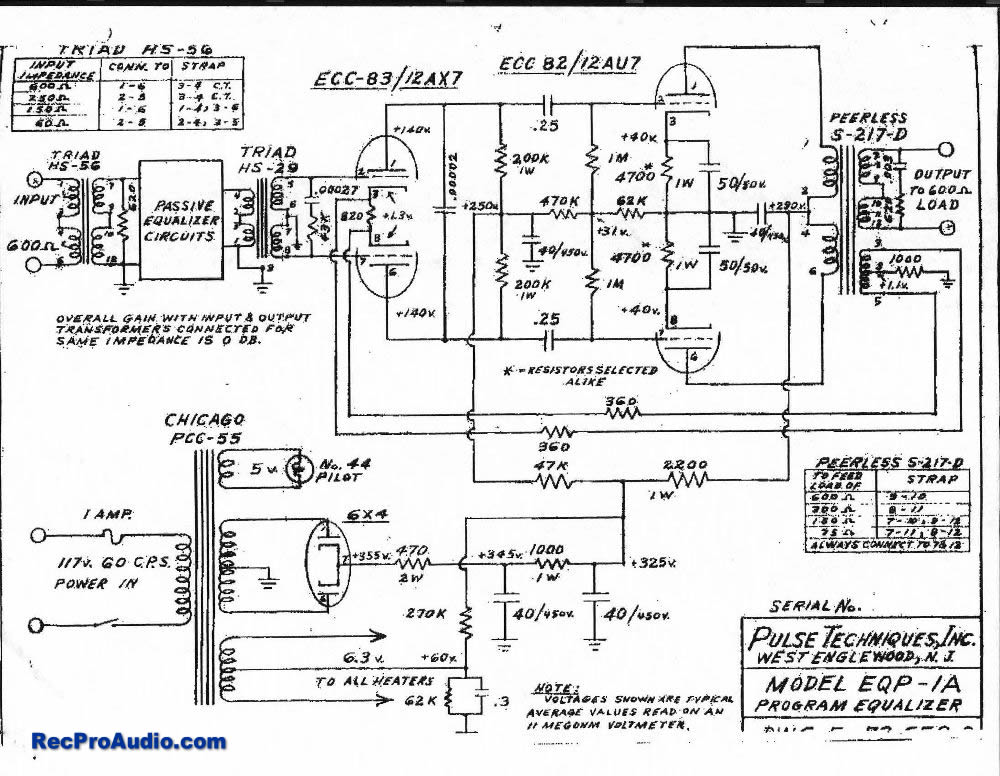
6-Band Graphic Equalizer

The EQ-2 is a circuit of a 6-band graphic equalizer. Each band is regulated from the potentiometers RV1-6, which are, for better visual indication of regulations, Fader. This does not imply that we cannot replace them with a simple potentiometer. At the center of the potentiometer regulation, the gain is null (flat), but at the terminal, it has +/- 15 db, boost or cut off, respectively. For stereo operation, it will be duplicated.
The EQ-2 circuit is designed for audio frequency control, specifically for equalizing the frequency response in audio systems. The six bands of regulation allow for a more precise adjustment of the sound profile, providing a wide range of tonal options. The potentiometers RV1-6, as the primary control elements, are responsible for adjusting the gain of each frequency band. The use of Faders, instead of simple potentiometers, enhances the visual feedback for the user, making it easier to identify and adjust the levels of each band.
When the potentiometer is in the middle position, it indicates a flat response, meaning there is no gain or loss in the signal level. However, when moved to the terminal, it can either boost the signal by 15 decibels or cut it off by the same amount, offering a significant range of amplification or attenuation for each band.
The circuit is designed for stereo operation, which means it will be used in pairs for left and right channels to maintain the stereo effect. This dual-channel operation is typical for audio systems to ensure that the sound output is balanced and equalized across both speakers.
In summary, the EQ-2 circuit is a sophisticated audio control system that allows for fine-tuning of sound frequencies through its 6-band regulation, adjustable via potentiometers or Faders. Its design is suitable for stereo operation, ensuring balanced sound output across both channels.The EQ-2 it is a circuit of graphic equalizer 6 band of regulation. Each band is regulated from the potesometers RV1-6, that are, for better optical indicate of regulations, Fader. This does not mean that we cannot him replace with simply potesometer. In the center of regulation potesometer, the gain is null (flat), but in terminal has +/- 15 db, boost or cutting off, respectively.
For stereo operation, it will be supposed two times. 🔗 External reference
The EQ-2 circuit is designed for audio frequency control, specifically for equalizing the frequency response in audio systems. The six bands of regulation allow for a more precise adjustment of the sound profile, providing a wide range of tonal options. The potentiometers RV1-6, as the primary control elements, are responsible for adjusting the gain of each frequency band. The use of Faders, instead of simple potentiometers, enhances the visual feedback for the user, making it easier to identify and adjust the levels of each band.
When the potentiometer is in the middle position, it indicates a flat response, meaning there is no gain or loss in the signal level. However, when moved to the terminal, it can either boost the signal by 15 decibels or cut it off by the same amount, offering a significant range of amplification or attenuation for each band.
The circuit is designed for stereo operation, which means it will be used in pairs for left and right channels to maintain the stereo effect. This dual-channel operation is typical for audio systems to ensure that the sound output is balanced and equalized across both speakers.
In summary, the EQ-2 circuit is a sophisticated audio control system that allows for fine-tuning of sound frequencies through its 6-band regulation, adjustable via potentiometers or Faders. Its design is suitable for stereo operation, ensuring balanced sound output across both channels.The EQ-2 it is a circuit of graphic equalizer 6 band of regulation. Each band is regulated from the potesometers RV1-6, that are, for better optical indicate of regulations, Fader. This does not mean that we cannot him replace with simply potesometer. In the center of regulation potesometer, the gain is null (flat), but in terminal has +/- 15 db, boost or cutting off, respectively.
For stereo operation, it will be supposed two times. 🔗 External reference
